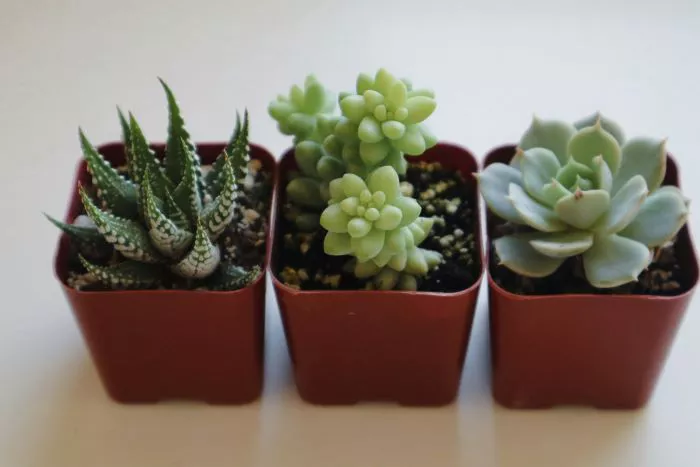Echeveria succulents are beloved for their striking appearance and ease of care. These plants thrive in various environments, making them popular choices for both indoor and outdoor gardens. One of the most crucial aspects of caring for Echeveria succulents is understanding their watering needs. This article provides a professional overview of how often to water Echeveria succulents, considering their unique characteristics and growth habits.
Understanding Echeveria Succulents
Echeveria is a genus of flowering plants in the Crassulaceae family, known for their rosette-shaped leaves and vibrant colors. Native to Central America, Echeveria plants have adapted to arid conditions, allowing them to store water in their leaves and stems. This adaptation makes them drought-tolerant and less demanding in terms of watering compared to other houseplants.
The Importance of Proper Watering
Watering is a fundamental aspect of plant care that directly affects the health and growth of Echeveria succulents. Overwatering can lead to root rot, which is a common problem among succulent owners. On the other hand, underwatering can cause stress and hinder growth. Finding the right balance is essential for maintaining healthy plants.
Factors Influencing Watering Frequency
Several factors influence how often you should water your Echeveria succulents. Understanding these factors can help you develop an effective watering routine.
Soil Type: Echeveria succulents require well-draining soil to thrive. A cactus or succulent potting mix is ideal. The soil’s drainage capability affects how quickly it dries out after watering. If the soil retains moisture, you may need to water less frequently.
Climate and Environment: The climate in which your Echeveria is growing plays a significant role in watering frequency. In hot and dry conditions, succulents may need more frequent watering. Conversely, in cooler, humid environments, they will require less water.
Seasonal Changes: Echeveria succulents have distinct growing and dormant seasons. During the growing season, which typically runs from spring to early fall, these plants actively absorb water and nutrients. You may need to water more often during this period. In contrast, during the winter months, Echeveria succulents enter a dormant phase and require less water.
Container Size: The size of the pot can also impact how often you should water. Smaller pots tend to dry out faster than larger ones. If your Echeveria is in a small container, you may need to check the soil moisture more frequently.
Plant Size and Health: Larger plants with more leaves will require more water than smaller, younger plants. Additionally, healthy Echeveria succulents will absorb water more efficiently than stressed or damaged plants.
General Watering Guidelines
While specific watering needs can vary, there are general guidelines you can follow to ensure your Echeveria succulents receive the appropriate amount of water.
Check Soil Moisture: Before watering, always check the soil moisture. Insert your finger into the soil about an inch deep. If the soil feels dry, it is time to water. If it still feels moist, wait a few more days before checking again.
Watering Frequency: During the growing season, Echeveria succulents typically need watering every one to two weeks. In hotter climates or during particularly dry spells, you may need to water more frequently. In cooler months, reduce watering to once every three to four weeks.
Watering Technique: When watering, do so thoroughly. Water the plant until excess water drains out of the bottom of the pot. This ensures that the roots receive adequate moisture. Avoid letting the plant sit in standing water, as this can lead to root rot.
Observe Your Plant: Pay attention to your Echeveria succulents. If the leaves begin to wrinkle or shrivel, it may indicate underwatering. Conversely, if the leaves turn yellow or mushy, this is a sign of overwatering.
Signs of Overwatering and Underwatering
Recognizing the signs of overwatering and underwatering is crucial for maintaining the health of your Echeveria succulents.
Overwatering Signs: Common signs of overwatering include yellowing leaves, mushy or translucent leaves, and a foul odor from the soil. If you notice these symptoms, reduce your watering frequency and ensure the pot has good drainage.
Underwatering Signs: Signs of underwatering include shriveled or wrinkled leaves, dry leaf tips, and stunted growth. If you observe these issues, increase your watering frequency and ensure the plant receives adequate moisture.
Seasonal Adjustments to Watering
As mentioned earlier, Echeveria succulents have different watering needs during their growing and dormant seasons. Adjusting your watering routine accordingly can help your plants thrive.
Spring and Summer: During the growing season, increase your watering frequency to every one to two weeks. Monitor the soil moisture regularly, especially in hot weather. Echeveria will benefit from consistent moisture during this active growth phase.
Fall and Winter: As temperatures drop and daylight hours decrease, Echeveria succulents enter dormancy. Reduce your watering frequency to once every three to four weeks. Allow the soil to dry out more between waterings, as the plants will not be actively growing.
Conclusion
Understanding how often to water Echeveria succulents is essential for their health and longevity. By considering factors such as soil type, climate, seasonal changes, and plant size, you can develop an effective watering routine. Regularly checking soil moisture and observing your plants for signs of stress will help you maintain the right balance. With proper care, Echeveria succulents will thrive, showcasing their beautiful rosettes and vibrant colors for years to come. Enjoy the process of nurturing these resilient plants and watch them flourish in your home or garden.


